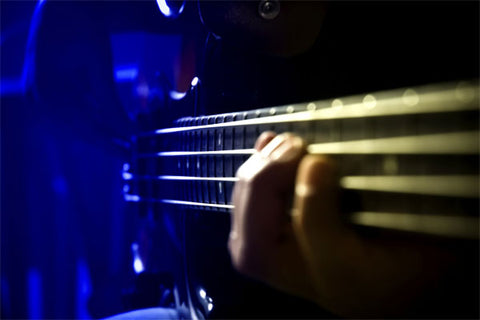-
Audio
-
Guitar
- Bass
-
Blog
-
SALE
- Financing
- Support
- SINCE 1946
May 10, 2016

Compression is an often-overlooked effect that can make your bass sound better than ever if you use it correctly. Understanding how it works will be of great use on stage and in the studio!
A compressor’s basic function is to make quiet sounds louder and louder sounds quieter. This is useful because dynamic range of the bass guitar is extremely wide- the low notes can shake the floor, while the high notes can get really clear and punchy. If you’re a bassist who loves to play slap bass, you’ve probably noticed it’s difficult to get the slaps on the low strings and pops on the high strings to be the same volume, even if you have excellent technique. Those high string pops will almost always provide a significant bump in volume, and you may have to set your volume unnecessarily low to compensate for these peaks, compromising the heft of the low notes. A compressor can remedy this by reducing the dynamic range, ensuring that your playing is nice and even.
Even if you don’t play slap bass, a compressor can still be a helpful tool. Many bassists in rock or metal play with a heavy pick or finger attack to get a growling, full sound. Using some light compression will make the bass sound more consistent and balanced.
Many of today’s bass amplifiers are equipped with onboard compressors, and knowing how to use them will help you optimize your bass sound. But there is a fine balance- using too much compression will make your bass sound squashed and dull. A little compression goes a long way!
The controls on compressors may be labeled differently, but the most common ones to recognize are Threshold and Ratio. Threshold works in units of decibels (dB), which are basic units of measurement of sound levels. Ratio is an input to output Ratio of reduction, or how hard it will compress. Here is a basic rundown of what each knob does.
Threshold: This is the level at which compression will start to be applied to your signal. The compressor will compress all levels above the setting on this control. If the incoming signal is below this setting then the compressor is off. So if you turn the knob down, you’ll get more compression, because the compressor will affect quieter notes. Turn the knob up and the compressor will only affect your loudest notes.
Ratio: This is the amount of compression that will be applied to your signal after your signal reaches the threshold level. As its name implies, the setting is a ratio of input to output signal levels. So let’s say you have the ratio set to 2:1. If your signal goes 10 dB over the threshold you set, it will be reduced to 5 dB. In another way the total output will be half the input when the threshold level is met.
Just like any other effect, knowing how and when to use a compressor opens up numerous new possibilities to help you sound your best!
March 28, 2025
At any time at any gig, something is bound to go wrong and you may need a tool to get you back up and running. Here are a few basic tools you should bring to every gig.
January 09, 2025
I once asked blues legend Walter Trout why he still plays his well-worn vintage Strat. The technology exists to digitally scan the guitar and make very accurate replicas. His response was he could leave it at home, but then it will never be played. Plus, someone could steal it from his home. At least the guitar is with him and he has the pleasure of playing it. But this may not be the same for everyone.
December 09, 2024
With modern day effects, it is possible to easily replicate guitar tones from early rock and roll in the 1950s to modern hard rock or metal.
Sign up to get the latest on sales, new releases and more…
NoFraud Frequently Asked Questions
"Make a joyful noise unto the Lord all of the earth; make a loud noise and rejoice and sing praises. Sing to the Lord with the harp and the voice of the psalm." - Psalm 98:4-5
© 2025 Carvin Audio.
Carvin Corp.
POS and Ecommerce by Shopify
